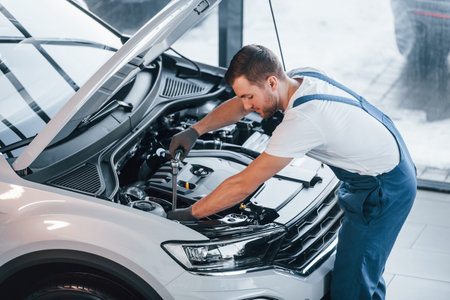1. Introduction to Oil Catch Cans
When it comes to turbocharged and high-performance engines, maintaining engine efficiency and longevity is crucial. One essential component that helps with this is an oil catch can. But what exactly is an oil catch can, and how does it function within an engine system?
What Is an Oil Catch Can?
An oil catch can is a small device installed in the PCV (Positive Crankcase Ventilation) system of an engine. Its main function is to capture oil vapors and other contaminants before they re-enter the intake system. This prevents carbon buildup, reduces engine sludge, and optimizes performance.
How Does an Oil Catch Can Work?
During engine operation, combustion gases and oil vapors escape from the crankcase. In a standard PCV system, these vapors are routed back into the intake manifold and burned off during combustion. However, over time, the presence of oil deposits in the intake can cause reduced efficiency and power loss. An oil catch can intercepts these vapors, separates the oil, and stores it in a reservoir, preventing it from re-entering the intake system.
Functions of an Oil Catch Can
| Function | Benefit |
|---|---|
| Traps oil vapors | Prevents buildup in the intake system |
| Reduces carbon deposits | Maintains engine efficiency |
| Prevents engine sludge | Extends engine life |
| Improves performance | Ensures cleaner air-fuel mixture |
Why Turbocharged and High-Performance Engines Need an Oil Catch Can
Turbocharged and high-performance engines operate under higher pressure and generate more blow-by gases than standard engines. This increases the amount of oil vapor in the intake system. Without an oil catch can, excessive oil buildup can lead to reduced efficiency, clogged intercoolers, and even detonation issues. Adding an oil catch can helps maintain optimal engine performance and longevity.
2. Why Turbocharged and High-Performance Engines Need Oil Catch Cans
Understanding Blow-By in Turbocharged and High-Performance Engines
Blow-by occurs when combustion gases escape past the piston rings into the crankcase. In naturally aspirated engines, blow-by is relatively manageable, but turbocharged and high-performance engines experience significantly more blow-by due to increased cylinder pressures and higher operating temperatures.
Blow-by contains a mixture of oil mist, fuel vapors, and combustion byproducts. If left unchecked, these contaminants can re-enter the intake system through the PCV (Positive Crankcase Ventilation) system, leading to carbon buildup on intake valves, reduced performance, and decreased efficiency.
How an Oil Catch Can Helps
An oil catch can is a simple but effective device that intercepts the blow-by gases before they return to the intake. It collects oil vapors and contaminants, allowing cleaner air to flow back into the engine. This helps maintain engine efficiency and prolongs component life.
Key Benefits of Using an Oil Catch Can
| Benefit | Impact on Engine |
|---|---|
| Prevents Carbon Buildup | Reduces deposits on intake valves, improving airflow and efficiency. |
| Enhances Performance | Keeps the intake system clean, maintaining optimal combustion. |
| Extends Engine Life | Reduces exposure to harmful contaminants and oil sludge. |
| Improves Fuel Efficiency | Prevents unburnt oil vapors from re-entering combustion, ensuring a cleaner burn. |
Why Turbocharged and High-Performance Engines Need It More
Turbocharged engines generate higher pressure in the cylinders, increasing the likelihood of blow-by. Additionally, direct-injection engines lack fuel washing over intake valves, making them more susceptible to carbon buildup. By installing an oil catch can, owners of turbocharged and high-performance engines can reduce maintenance issues and maintain peak performance for longer.

3. Benefits of Using an Oil Catch Can
Installing an oil catch can in a turbocharged or high-performance engine provides several key benefits. It helps reduce carbon buildup, improves engine efficiency, and extends the overall lifespan of the engine. Lets take a closer look at these advantages.
Reducing Carbon Buildup
One of the biggest issues in modern direct-injection engines is carbon buildup on intake valves. Since fuel does not wash over the valves like in older port-injection systems, crankcase vapors containing oil and contaminants coat the intake valves, leading to performance issues over time. An oil catch can traps these contaminants before they reach the intake system, preventing carbon deposits from forming.
Improving Engine Efficiency
When oil vapors and other contaminants enter the intake manifold, they can interfere with the air-fuel mixture, leading to inefficient combustion. This can cause a loss of power, increased fuel consumption, and higher emissions. By keeping the intake system clean, an oil catch can ensures the engine runs more efficiently, delivering better throttle response and fuel economy.
Extending Engine Life
Excessive oil vapor in the intake system can lead to increased wear on engine components over time. Parts such as the intake valves, pistons, and combustion chambers can suffer damage due to the buildup of oil and other impurities. Using an oil catch can helps minimize this wear, resulting in a longer-lasting and more reliable engine.
Key Benefits of an Oil Catch Can
| Benefit | How It Helps |
|---|---|
| Reduces Carbon Buildup | Prevents contaminants from coating intake valves |
| Improves Engine Efficiency | Maintains a proper air-fuel mixture for better combustion |
| Extends Engine Life | Reduces wear on internal engine components |
By addressing these common issues, an oil catch can proves to be a valuable addition to any turbocharged or high-performance engine, helping maintain peak performance and reliability over time.
4. Installation and Maintenance of an Oil Catch Can
Installing and maintaining an oil catch can is essential for ensuring its effectiveness in keeping your turbocharged or high-performance engine clean and efficient. Here are some basic guidelines to help you with proper installation and maintenance.
How to Install an Oil Catch Can
Proper installation is key to maximizing the benefits of an oil catch can. Follow these general steps for a successful setup:
1. Choose the Right Location
Mount the oil catch can in an accessible spot within the engine bay, preferably away from excessive heat sources.
2. Identify the PCV and Intake Lines
Locate the positive crankcase ventilation (PCV) hose and the intake manifold connection. These are the primary points where the catch can will intercept oil vapors.
3. Install the Catch Can
Securely connect hoses from the PCV valve and intake manifold to the corresponding ports on the catch can. Ensure all fittings are airtight to prevent leaks.
4. Secure the Connections
Use hose clamps or fittings to prevent air leaks and ensure a tight seal. Double-check that all connections are firm and secure.
5. Test for Leaks
Start the engine and inspect for any leaks or loose connections. If everything is in place, the oil catch can is ready to function.
Maintenance Tips for an Oil Catch Can
Regular maintenance is required to keep the oil catch can functioning optimally. Follow these simple steps:
1. Check and Empty the Can Regularly
How often you need to empty the catch can depends on driving conditions, but a general rule is to check it every 1,000 to 3,000 miles.
2. Inspect Hoses and Fittings
Check for cracks, loose connections, or leaks in the hoses and fittings. Replace worn-out components if necessary.
3. Clean the Catch Can
Disassemble and clean the catch can periodically to remove any accumulated sludge. Use a degreaser or solvent to wash the interior.
4. Monitor Oil Collection
Observing the amount of oil collected can help diagnose potential engine issues. Excessive oil buildup may indicate a worn-out PCV valve or other issues.
Quick Maintenance Overview
| Task | Frequency |
|---|---|
| Empty the can | Every 1,000 – 3,000 miles |
| Inspect hoses & fittings | Every oil change |
| Clean the catch can | Every 6 months |
By properly installing and maintaining your oil catch can, you can help keep your engine clean, reduce carbon buildup, and extend the life of your turbocharged or high-performance engine.
5. Conclusion: Enhancing Engine Longevity and Performance
After understanding the role of oil catch cans in turbocharged and high-performance engines, it’s clear that this simple upgrade can make a significant difference. By preventing oil and contaminants from entering the intake system, an oil catch can helps maintain cleaner airflow, optimize combustion, and reduce carbon buildup. This results in better efficiency, enhanced engine life, and improved overall performance.
Why Every Enthusiast Should Consider an Oil Catch Can
For performance enthusiasts who push their engines to the limit, an oil catch can is more than just an accessory—it’s a necessity. Whether you own a turbocharged sports car or a high-performance tuned vehicle, installing an oil catch can will help protect your investment and ensure your engine runs efficiently for years to come.
Key Benefits at a Glance
| Benefit | Explanation |
|---|---|
| Reduces Carbon Build-Up | Prevents oil vapors from coating intake valves, maintaining optimal airflow. |
| Improves Performance | Keeps air-fuel mixture cleaner for consistent power delivery. |
| Extends Engine Life | Minimizes sludge formation within the intake and combustion system. |
| Maintains Efficiency | Reduces oil contamination in the intake, keeping sensors and components functioning properly. |
Final Recommendation
If you’re serious about maintaining your turbocharged or high-performance engine, investing in an oil catch can is a smart decision. It’s a relatively inexpensive upgrade that provides long-term benefits. Be sure to choose a high-quality catch can, regularly check and empty it, and enjoy a cleaner, more efficient engine for the long haul.

